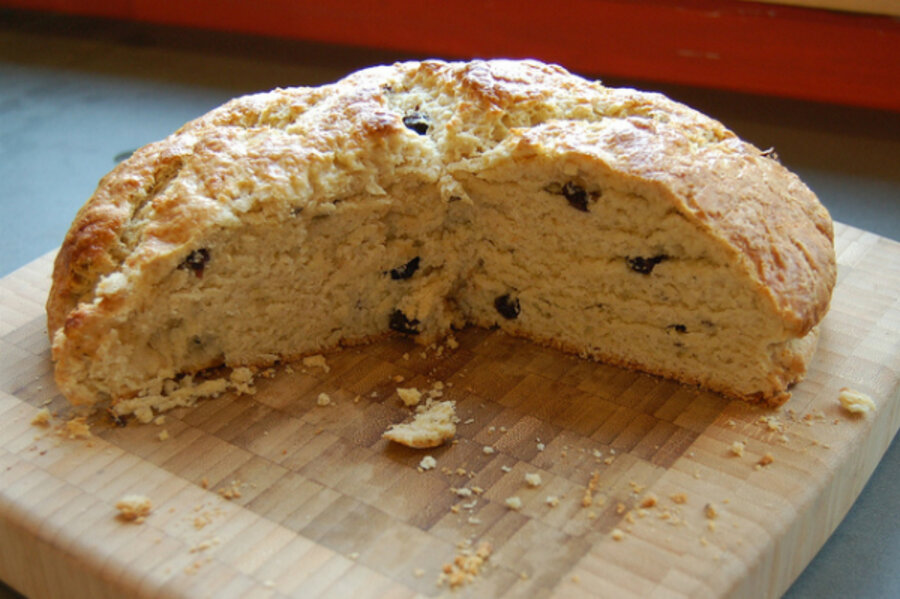Sweet Irish soda bread
Loading...
One St. Patrick’s Day I spotted these big, gorgeous hunks of Irish soda bread lying around, flaunting their good looks in a local bakery. As I was drooling over them, I realized that I actually had no idea what Irish soda bread was. I decided to look it up when I got home.
Turns out that it's called soda bread for, you guessed it, bicarbonate of soda, which is used to leaven the bread. My search turned up lots of variations on traditional Irish soda bread, which is made with flour, baking soda, buttermilk and salt – nothing more or less.
I was particularly drawn to the recipes for sweet Irish soda bread with raisins since "ray-ray" constituted one of my son’s main food groups at the time. He had a hollow leg when it came to "nature's candy." And since that carton of organic buttermilk sitting in the fridge was not getting any younger, I figured, why not give it a shot?
Technically, sweet soda bread is not actually considered Irish soda bread at all by purists – it's considered an "impostor" that is also referred to as "Spotted Dick," "Spotted Dog" or "Railway Cake." For more on this heated controversy, visit The Society for the Preservation of Irish Soda Bread.
It did not take long to mix up a batch of dough and get it ready to bake. The caraway seeds gave me pause for a moment but then I tossed them in and I am so glad I did. The combination of their uniquely tangy, almost floral flavor and the straightforward fruity sweetness of the raisins is not to be missed.
Soda bread is traditionally baked with a cross cut on top. Shannon Marie at Forks, Knives & Spades, offers up three possible explanations for the cross:
- To help it cook more uniformly,
- To let the faeries out prior to baking, or
- To remind good Irish Catholics where their loyalties lie.
Whatever the reason(s), I think it makes the baked loaf look even prettier.
Spotted dog or Sweet Irish soda bread
Makes one large loaf
4 cups all-purpose flour, plus more for shaping
3 tablespoons sugar
1 teaspoon salt
1-1/2 teaspoons baking powder
4 tablespoons butter, cold and cut into pieces
1/2 cup raisins or currants (you can use more if you're into raisins)
1 tablespoon caraway seeds
1 large organic egg
1-1/2 cups buttermilk
1 teaspoon baking soda
1. With the oven rack in the center, preheat the oven to 375 degrees F. Line a baking sheet with a Silpat or parchment paper and set aside.
2. In a large bowl, whisk together the flour, sugar, salt and baking powder. Add the butter and cut it in with a pastry blender until the mixture is the consistency of fine meal. Once at this point, use your hands to pinch and fluff the mixture. Add the raisins and caraway seeds and mix in with your hands to distribute.
3. In another bowl, beat the egg with a fork, then stir in the buttermilk and baking soda. Make a well in the dry ingredients and pour in the wet ingredients. Stir with the fork until the mixture forms a damp dough.
4. Turn the dough out onto a lightly floured surface and coat the dough with flour on all sides. Knead with your hands a few times, then flatten into a disk about 8-inches across. Place in the center of the prepared baking sheet and, with a floured sharp knife, cut a ½-inch-deep cross on top.
5. Bake for 45-55 minutes. The loaf should be a deep golden brown and sound hollow when rapped with knuckles. Remove from the oven and cool on a wire rack.
Related post on The Garden of Eating: Classic currant scones






